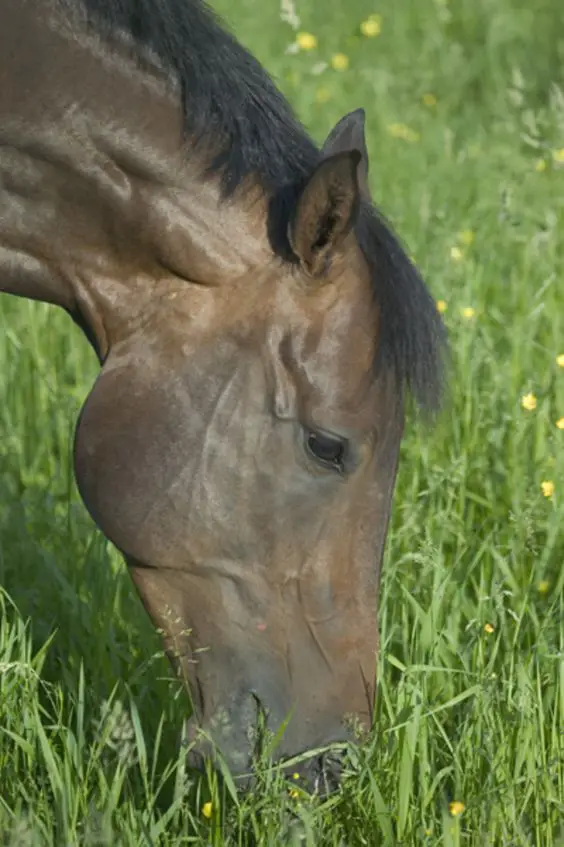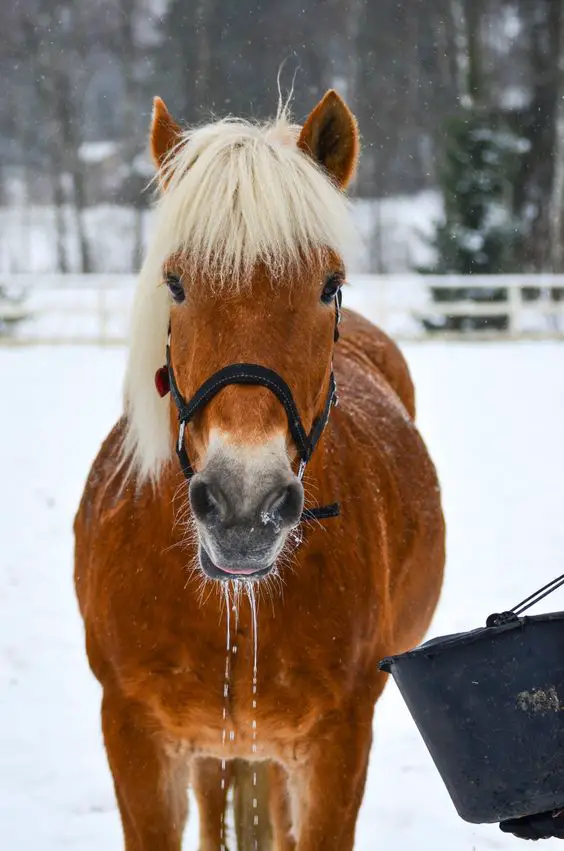Horses are herbivores, so they eat food exclusively of plant origin. In the wild, they eat 20 hours a day, since the volume of their stomach is small enough, and they prefer to eat often, but little by little. In captivity (especially when kept in a stable), horses are deprived of free access to natural feed, as a result of which their diet must be carefully planned.
What Do Horses Eat?

Not so long ago (twenty years ago) horse breeders gave horses only grass, oats, and hay. Currently, a separate industry is engaged in the diet of these animals, which combines scientific laboratories and powerful production complexes. Now feeding these animals is a whole independent science.
Just like people, horses differ from each other in their character, physique, and other individual characteristics. Therefore, each individual needs a certain amount of food and a certain diet.
Its composition should not only provide the animal’s body with the necessary nutrients but also vitamins and minerals necessary for normal development. In addition, the intensity and scope of the animal’s practical use affect the composition of the diet. The basis of the diet of domestic horses is roughage and concentrates. What do wild horses eat in their natural habitat?
Feeding Wild Horses
The diet of horses in the wild is obvious – grass and other available vegetation.
In summer, they eat fresh greens, and in winter, dry remains of vegetation, often hidden by the snow cover. Despite the fact that this is quite enough for animals for a normal life, wild horses live much less than domestic ones. This is due to the constant struggle for existence and dependence on natural conditions (drought, heavy snowfalls, and so on).
The diet of wild horses depends on their habitat.
If the climatic conditions of their region are difficult and harsh, then they eat not only grass but also leaves and branches of trees. A hungry wild horse can also eat tree bark. The fertile southern steppes and forest-steppes have plenty of lush vegetation, and there are no problems with green forage.
Feeding Domestic Horses
For a long time, these animals were the main draft force and means of transportation, which left its mark on their diet.
Hard work in agriculture and transporting various goods required a large amount of energy, which the horses had to receive from food. In such conditions, grass and hay alone were not enough, and grain and milling products were added to their diet in order to ensure full recovery of the energy expended by the animals.
A separate topic is the nutrition of sports horses. Currently, sports horse breeding is the main direction of this industry, since neither in the army nor in agriculture and transport, horses are currently almost never used. Horses participating in equestrian competitions required concentrated feed with increased nutritional value, such as bran, compound feed, and various mineral and vitamin supplements.
When compiling a racehorse ration, a number of factors are taken into account: gender, age, general physical condition, the intensity of exercise, and type of sports discipline, as well as the season, physique, and breed.
The diet of horses intended for sport also changes depending on the period – training or competition. In this regard, there is no ready-made optimal composition of feed for all occasions.
The basis of the diet for domestic horses is:
- grain crops (oats, barley);
- hay;
- fresh herbal herbs;
- various root vegetables (carrots, zucchini, beets);
- concentrated feed;
- compound feed;
- vitamin and mineral supplements.
How and What to Feed a Horse?
Since, as mentioned above, the amount of feed and its composition directly depends on the intensity and direction of the animals’ work, we present the average indicators of the composition of the diet and its amount for an abstract domestic horse.
For example, a horse weighing from 450 to 500 kilograms per day eats about six kilograms of oats, from seven to ten kilograms of hay, about six kilograms of various root crops (mostly carrots and beets), and about two kilograms of bran.
In addition, in the summer, the domestic horse eats fresh grass in the pasture, and in the winter it receives delicacies in the form of apples, sugar, crackers, or cabbage. In addition, depending on age and gender, the animal is given a certain amount of mineral and vitamin supplements.
It is best to feed horses at the same time every day, dividing the daily ration into small portions. Three meals a day are considered optimal: morning – afternoon – evening. The animal should always have fresh hay in the feeder, and in a separate compartment – salt in the form of a lick.
In summer, horses are often released to pasture during the day, which can significantly reduce feed costs.
All types of feed can be divided into bulk and concentrated. The former include hay, grass, straw, and other plant foods. The second group includes grain, grain products, and animal feed.
Bulk feed, in turn, is divided into:
- rough (straw and hay);
- juicy (fresh herbs and haylage).
Concentrates are bran, grain, root crops, compound feed, and additives.
Both groups differ in their energy and nutritional value.
If we consider the question of a competent approach to feeding horses, then the nature of her work should be taken into account. A heavily loaded horse needs a higher proportion of concentrates, and horses that are not under heavy loads can do without them.
It is worth saying that you cannot feed animals with concentrates alone. Bulk feeds (especially coarse ones) contain fiber, which improves the digestion process and increases the absorption of nutrients. Therefore, in any diet, the proportion of feed of the bulk group should be at least 60 percent (with light work of the horse – up to 80), and concentrated feeds should be no more than 40 percent.
Rules of Watering Horses

Speaking about the basic principles of feeding these animals, one cannot fail to mention their drinking. They drink a lot of water – up to 60 liters per day.
Therefore, access to clean and fresh water must be constant. This can be achieved in two ways: either constantly add water at certain hours, or put on automatic drinkers. The second option is most often used in large horse breeding farms.
In conclusion, I would like to say that the selection of a diet is an important and responsible matter, therefore, at first, it is best for beginners to seek advice from experienced horse breeders and veterinary specialists.
